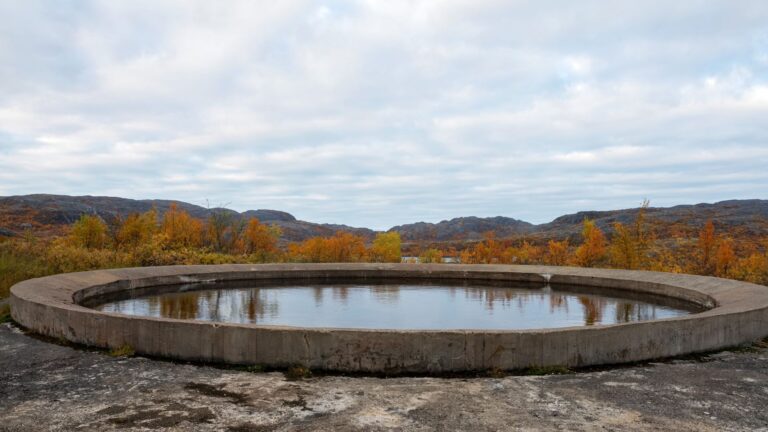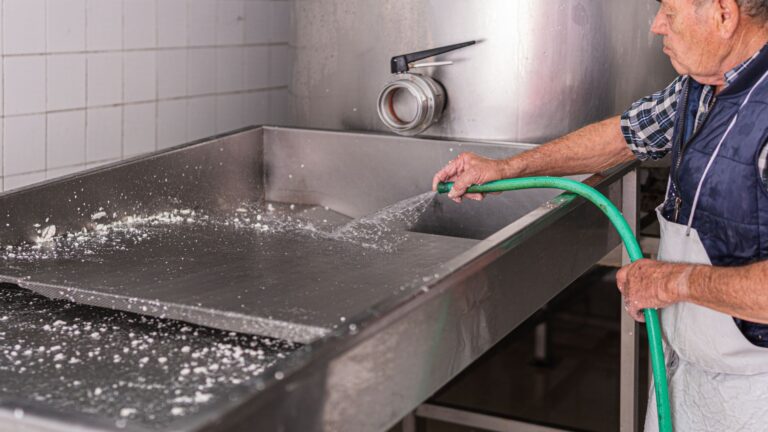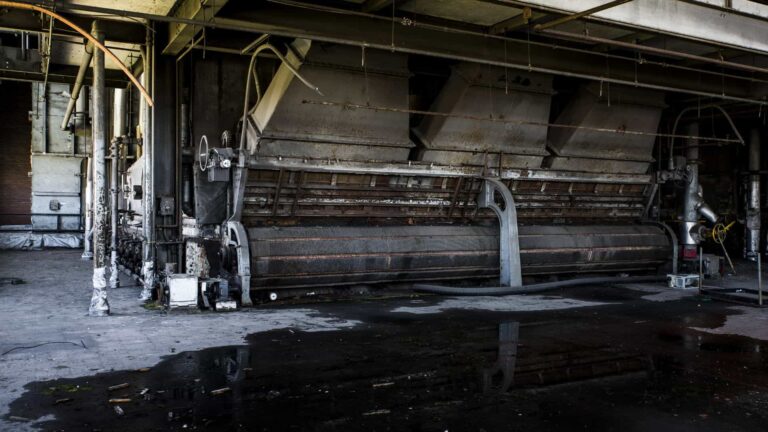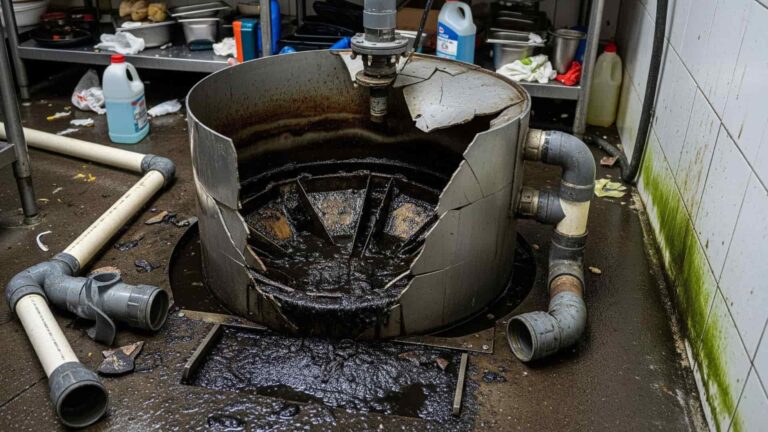Proper grease trap cleaning includes a variety of options, all of which are vitally important to the functions of commercial kitchens.
Grease traps simply work to keep the grease used during the cooking process from reaching the wastewater systems. Without them functioning properly, a lot more clogs begin to form.
For this reason, most commercial kitchens have a grease trap installed. Maintaining them, however, is sometimes neglected.
Luckily, trade waste disposal specialists like Direct Waste can help.
What Exactly Are Grease Traps?
Grease traps, sometimes called grease interceptors or grease arrestors, act like a filter for the dirty water that leaves your kitchen. Instead of letting fats, oils, and grease slip straight into the main sewer line, these handy devices catch them first. When hot, greasy water from sinks and dishwashers enters the trap, it cools just enough for the grease to float on top, while cleaner water eases out the bottom.
You can find grease traps in all sizes, so they fit just about any food business. A tiny café might use a small, under-the-sink model, but a busy restaurant usually needs a larger, outdoor interceptor that serves the whole kitchen. No matter how big or small, every trap works toward the same goal: keeping grease out of the city’s wastewater system.
The setup looks basic yet does an outstanding job. Most models include a few separate chambers that slow the moving water, allowing solid bits and liquids to drift apart. It may sound like simple physics, but the design only shines when owners stick to regular cleaning.
Why Grease Trap Cleaning Services Matter
Regular grease trap cleaning services ensure that the systems function as they should. Not only does this prevent the build up of smells, but is also ensures that the system does not break due to poor maintenance.
Prevent Blockages and Costly Repairs
Nobody wants a clogged drain during the lunch rush. If grease traps aren’t emptied on schedule, they overflow and dump fat directly into the pipes. That backup can hit hard, parking the kitchen and racking up repair bills.
Picture trying to calm a room full of diners whose meals are suddenly stalled because sewage is backing up. Routine grease-trap cleaning steps in front of these emergencies, saving time and money while keeping service smooth.
Keep Your Kitchen Hygienic
Overdue traps ooze rancid sludge, feed insects, and turn the kitchen into a stink once the vents kick on. Yucky smells don’t stop at the staff door; they drift into the dining room and chase customers away.
Frequent professional scoops keep interceptors clean and the air fresh, letting chefs focus on food, not odour wars. Fresh traps support high hygiene scores, protect reputations, and keep guests returning hungry for more.
Protect the Environment
When leftover cooking oils and fats slip down the drain, they don’t vanish. Instead, they build up inside pipes, jam pumps at treatment plants, and eventually foul local rivers and oceans. Regular cleaning of grease traps makes sure these problems don’t start in the first place, so every job you schedule helps keep Australia’s beaches clean and wildlife safe.
How Often Should You Schedule Grease Trap Cleaning?
Cleaning intervals vary, yet most busy kitchens should plan service every four to eight weeks. High-volume restaurants frying might require weekly visits, while a small café doing light grilling could get by with a check once a month.
A helpful marker is this: if traps are more than a quarter full of grease and solids, book a clean right away. Beyond that threshold, the release can start creeping down the drain anyway.
Catering vans frying chips or fish outdoors produce heavier waste than quick-service sandwich shops or salad bars, so adjust accordingly. Partnering with an experienced grease-removal team lets you craft a routine that suits your menu and keeps operations running smoothly.
Signs Your Grease Traps Need Attention
The signs that a grease trap is not functioning correctly aren’t difficult to miss. Grease trap waste does not accumulate without warning, many of which are self-evident of a problem in a wastewater system.
Slow-Draining Sinks
If your kitchen sinks are taking longer to drain than usual, it’s often the first sign that your grease interceptors are getting full. Don’t ignore this warning—it usually means you’re only days away from complete blockage.
Grease Trap Smell and Unpleasant Odours
Bad smells coming from your drains or around your grease trap area indicate that solid and liquid waste is starting to decompose. This grease trap smell means bacteria are multiplying and it’s time for professional cleaning.
Grease Overflow
If you see grease floating in your sink or notice greasy waste water backing up, your trap has reached capacity. This requires immediate attention during business hours to prevent major plumbing problems.
Grease Trap Maintenance
Before plates hit the dishwasher, scrape off leftover food and excess grease. Show your team how to toss food scraps in the bin and pour used oil into designated bins, not down the drain.
Fit every sink with a strainer that catches vegetable bits, meat fibres, and other solid waste. Tiny actions like these cut back on drain clogs and stretch the time between grease-trap cleanings.
Regular Monitoring
Lift the lids on your grease traps every week and note how thick the layer of grease is and if any debris has clogged the baffles. If your model has a pump-monitoring feature, listen for its alerts so trouble never creeps up on you.
Wipe down the access covers and the floor around them to stop flies, rats, and other pests from invading your kitchen. A neat exterior is a quick sign to health inspectors that you care about the inside too.
Staff Training
Gather the crew once a month to review what belongs in the bin and what goes down the drain. The clearer everyone is on these rules, the lower the chance of a dirty, expensive cleanup later.
Hands-on reminders, like showing new hires how to empty strainers or how to spot a full trap, keep good habits fresh. When the whole team plays its part, grease traps stay calm and your drains keep flowing.
Cost Considerations and Business Benefits
Paying a professional to clean your grease trap isn’t just another bill; it keeps your kitchen running without surprises. Prices change based on trap size, how often you clean, and where your restaurant is, yet they’re always lower than the cost of blocked drains or broken equipment.
Most cleaning companies bundle services into repeat-maintenance packages, so one upfront price can end up cheaper than calling them every time things smell bad. Those bundles also stop you from accidentally allowing months to slip by before the next appointment.
Think, too, about the hidden costs of ignoring your trap: that lost money firms lose when kitchens shut down, the exorbitant repair bills from emergency calls, and the fines local water boards impose on businesses that dump grease. When you add it all up, regular professional service is a bargain you can’t afford to pass up.
Environmental Impact and Sustainability
Keeping your trap clean isn’t only good for your oven and fryer; it’s also a small way you protect Australian rivers and coastlines. Left unchecked, grease slips into the sewer, jams pumps at treatment plants, and eventually ends up polluting our beaches and waterways.
The good news is that many cleaning crews now recycle the waste they haul away, turning collected grease into biodiesel fuel instead of sending it to a landfill. This simple switch cuts their carbon footprint and gives your kitchen a greener story to tell customers who care about the planet.
When you keep your grease interceptors clean, you send a message to customers and neighbours that you genuinely care about the planet. That good green reputation can help your business stand out in a crowd.
Making the Right Choice for Your Business
Cleaning your grease trap isn’t just a chore for the kitchen staff – it’s a must if you want cooking, plumbing, and guest reviews to stay positive. Schedule regular professional cleanings and watch expensive backups shrink while peace of mind grows.
So, don’t let a slow drain force your hand. Set up a steady cleaning routine now, teach your team how to dispose of waste the right way, and both your local utility and the planet will be grateful.









